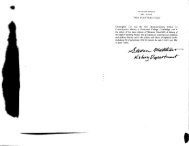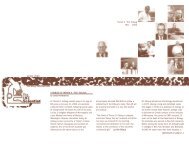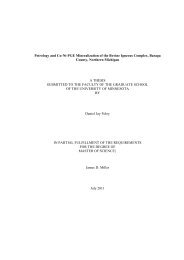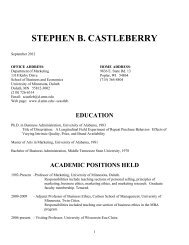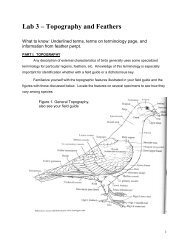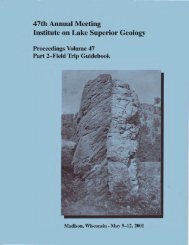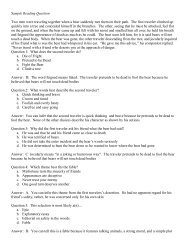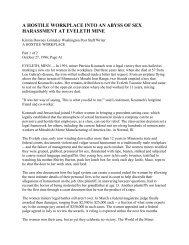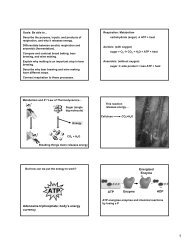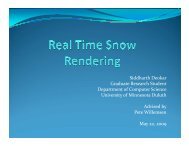Program, Abstracts, and Guidebooks - University of Minnesota Duluth
Program, Abstracts, and Guidebooks - University of Minnesota Duluth
Program, Abstracts, and Guidebooks - University of Minnesota Duluth
You also want an ePaper? Increase the reach of your titles
YUMPU automatically turns print PDFs into web optimized ePapers that Google loves.
—88—<br />
laurvikites highest in the group are commonly porphyritic.<br />
Several zones are recognized within the main group.<br />
Upper Zone<br />
Lower Zone<br />
Inner Border Zone 'B'<br />
Inner Border Zone 'A'<br />
Outer Border Zone<br />
massive laurvikite<br />
layered laurvikite<br />
layered gabbro<br />
massive gabbro<br />
chilled gabbro<br />
The Secondary Group is composed <strong>of</strong> an older, saturated series<br />
which includes syenodiorites (Map Unit 4) <strong>and</strong> nordmarkites (Map<br />
Unit 5) <strong>and</strong> a younger, undersaturated, series with several varieties<br />
<strong>of</strong> feldspathoidal syeniie (Map Unit 6). Generally, within this group,<br />
rocks comprising the saturated series are peripheral to the felds—<br />
pathoidal syenites.<br />
Except for the feldspathoidal syenites, which are layered at<br />
some localities, the rocks Of the Secondary Group are massive <strong>and</strong><br />
apparently structureless.<br />
The Secondary Group is characteristically associated with<br />
xenolithic bodies. Although widespread, these bodies are thought<br />
to belong to one large unit, the so—called Coubran Lake meta—<br />
volcanic cap. Common variants, generally gradational one to the<br />
other, include aphanitic amygdular <strong>and</strong> diabasic volcanics. The<br />
'cap' rocks <strong>and</strong> the rocks <strong>of</strong> the Secondary Group are preferentially<br />
concentrated in that portion <strong>of</strong> the massif which is west<br />
<strong>of</strong> Wolf Camp Lake. (ref to Stop 3, Fig 4).<br />
It is noted that the 'cap' appears to be 'free—floating'<br />
in the north <strong>and</strong> 'attached' in the southern part1<br />
These <strong>and</strong> other relationships suggest a near—ro<strong>of</strong><br />
situation <strong>of</strong> the present level <strong>of</strong> exposure.<br />
The Port Coldwell magma, which apparently contained solid<br />
plagioclase fledspar, was emplaced (1) from a probable source<br />
located to the SSW, (2) by a process <strong>of</strong> doming, stoping, <strong>and</strong><br />
forceful injection, <strong>and</strong> (3) at P—T conditions sufficient to gener<br />
ate a thermal aureole within the pyroxene—hornfels facies.<br />
The rocks <strong>of</strong> the aureole show rheomorphic veining, <strong>and</strong> ana—<br />
texites which commonly exhibit flow layering or schlieren trending<br />
parallel to the immediate gabbro contact. Areas <strong>of</strong> more intense<br />
migma development were probably controlled by the distribution<br />
pattern <strong>of</strong> favourable.lithologies as modified by folding, faulting<br />
<strong>and</strong> emplacement characteristics <strong>of</strong> the massif. The coincidence<br />
<strong>of</strong> numerous geological contacts with lineaments is compatable with<br />
a magma cooling history involving doming <strong>and</strong> fissuring, with<br />
probable block subsidence, <strong>and</strong> the 'near—ro<strong>of</strong>' level <strong>of</strong> Massif<br />
exposure.




